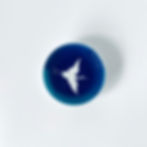MIKAWACHI - The Hidden Gem for High-end Japanese Porcelain
Among the famous Arita, Imari, Hasami porcelain towns, in the old region of Hizen, is a village named Mikawachi.
Mikawachi was established in the mid 1600s as a pottery town funded by the Feudal Lord of Hirado. The sole purpose was to produce high-quality porcelain ware for the elite class and diplomatic gifts for the European guests of the clan. Unlike neighboring Arita or Hasami, sales of Mikawachi-ware was strictly prohibited. This allowed the artisans to focus in advancing their techniques and styles of work with the finest material. Techniques developed were guarded as top secrets.
It wasn’t until Meiji Restoration that it started producing for the general market and exports. There are about 12 family-run kilns still actively producing in the quaint hill village. Today, we should feel privileged to own Mikawachi-ware because of its history, artisans' dedication and fine workmanship.
It is a hidden gem not any less reputable than its neighboring towns.
Mikawachi ware is recognized as Japan Heritage.
Out of the "Cobalt Blue"
Some of the typical motifs of Mikawachi-ware are landscape, plants, and "Karako" children. But whales?



porcelain art, painted porcelain, relief on porcelain

Years ago, Mr. Imamura met a whale researcher in Tokyo, which got him interested in studying the big mammals. Over the years, he met more whale-lovers and has gained more knowledge about whales. The whale-research community has eventually become his resource and “critics” for his artwork. Even though Mr. Imamura has not seen a real whale, he started painting whales, fusing Mikawachi motifs and techniques in it. Whale underglaze-painting 鯨絵has since become the signature work of Koun Kiln. He also uses the region's whaling history as his inspiration.
The light-weight delicacy of Mikawachi-ware, and whiteness of fine porcelain, the range and depth of cobalt blue that Mikawachi's artisan has perfected, the skillful brushwork of Japanese wave motif 青海波, all provided the perfect backdrop for Mr. Imamura's subject matter.
Mr. Imamura captured the plump and beautiful form, liveliness and playfulness of the big mammal. He celebrates the lives of these wonderful sea creatures, through his passion, his imagination and his exquisite skills.

For finer quality and detailing
For 400 years, pottery towns in the old Hizen region have developed a robust process of mass hand-production. Artisans’ duties are assigned by work-types: formation, painting, glazing, firing. Due to the intricacy of patterns and motifs, underglaze painting tasks are defined. Each artisan may handle only a portion of an overall paint work.
At Koun Kiln, Mr. Imamura manages the entire process on his own, from claywork to final finished product. Although this limits his capacity to produce abundant works, but crafting slowly allows him to enjoy the process of seeing his own work comes to life.
While many works are molded by mechanical pottery jig for efficiency, Mr. Imamura sometimes throws and trims by hand when he wants to achieve thin clay profile and delicate footing And his most favorite part of the production remains to be in painting. Occasionally, Mr. Imamura would produce stoneware and claypots as well. He excavates clay from the nearby mountain.
In the true spirit of Mikawachi-ware, with small batch production, the artisan can hone in on refinement and exploration.
Recovering and Sustaining the Craft
Mikawachi's artisans carry the responsibility in sustaining a 400-year-old porcelain craft. Mr. Imamura helped revived a slip relief-painting technique called Okiage (置き上げ) which had been lost for over a decade. When asked about his apprentice, Mr. Imamura said, “That is a problem. Young generations desiring to learn the craft are sparse. I believe one way to sustain our craft is to teach.” Aside from producing at Koun Kiln, Mr. Imamura dedicates his time teaching at an apprentice program organized by the Mikawachi Porcelain Artisans Union.
Within the realm of Mikawachi's tradition, Mr. Imamura expresses his passion and built his unique presence. At Koun Kiln, his commitment to perfect his craft and create captivating work for patrons remains unchanged as his ancestors' from 400 years ago.
We hope overseas advocates can experience the same privilege of owning a piece of Mikawachi just like the European patrons and guests from centuries ago.

Each pattern is hand-traced onto bisque-ware by pencil.

A range of brushes are used for outlining and color filling.


Each pattern is hand-traced onto bisque-ware by pencil.
A part of Mikawachi history, made and hand-painted by the Imamura hands.
Koun Kiln's Whale Series
Special Gallery
Gallery features work that are special edition and made-to-order.


































